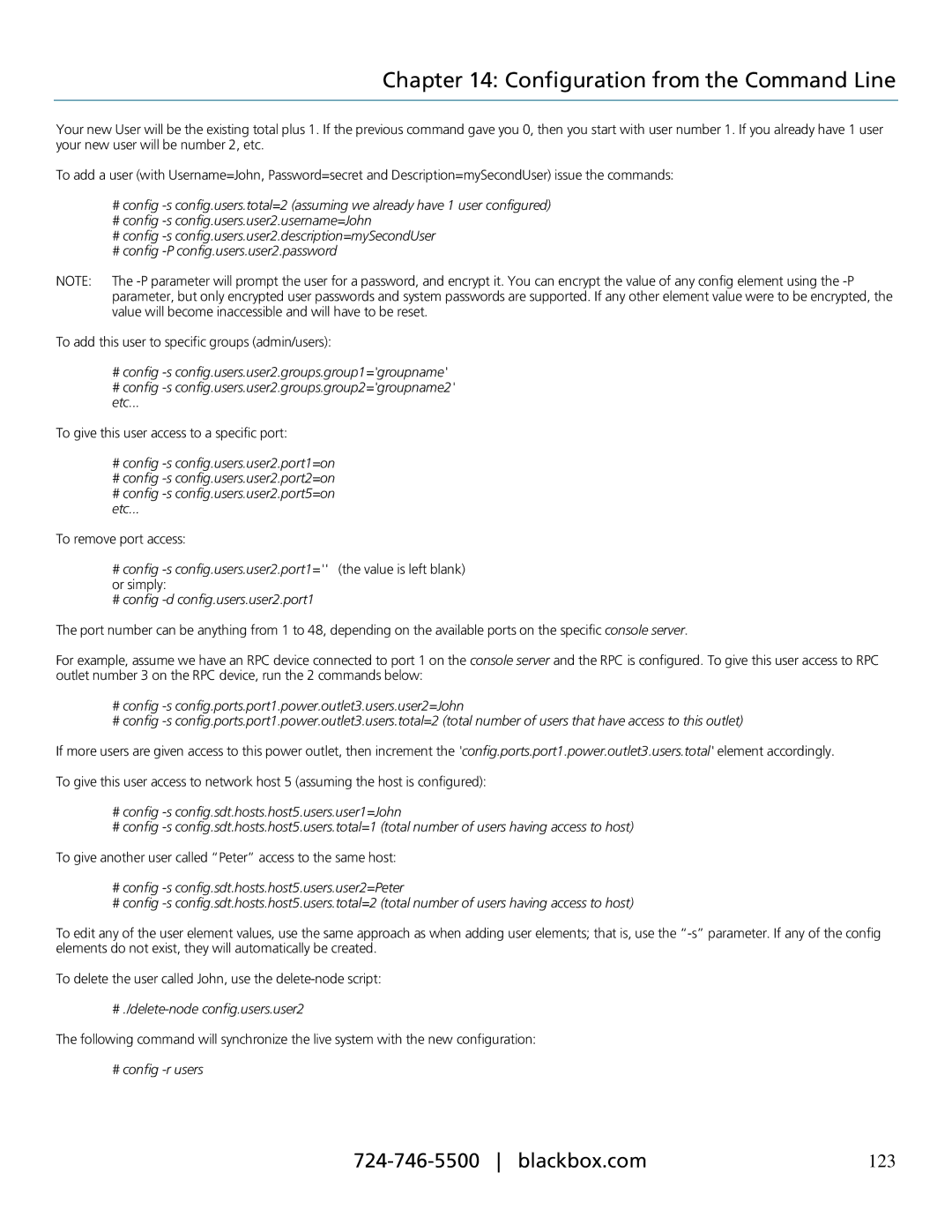Chapter 14: Configuration from the Command Line
Your new User will be the existing total plus 1. If the previous command gave you 0, then you start with user number 1. If you already have 1 user your new user will be number 2, etc.
To add a user (with Username=John, Password=secret and Description=mySecondUser) issue the commands:
#config
#config
#config
#config
NOTE: The
To add this user to specific groups (admin/users):
#config
#config
To give this user access to a specific port:
#config
#config
#config
To remove port access:
# config
# config
The port number can be anything from 1 to 48, depending on the available ports on the specific console server.
For example, assume we have an RPC device connected to port 1 on the console server and the RPC is configured. To give this user access to RPC outlet number 3 on the RPC device, run the 2 commands below:
#config
#config
If more users are given access to this power outlet, then increment the 'config.ports.port1.power.outlet3.users.total' element accordingly.
To give this user access to network host 5 (assuming the host is configured):
#config
#config
To give another user called “Peter” access to the same host:
#config
#config
To edit any of the user element values, use the same approach as when adding user elements; that is, use the
To delete the user called John, use the
# ./delete-node config.users.user2
The following command will synchronize the live system with the new configuration:
# config -r users
123 |
